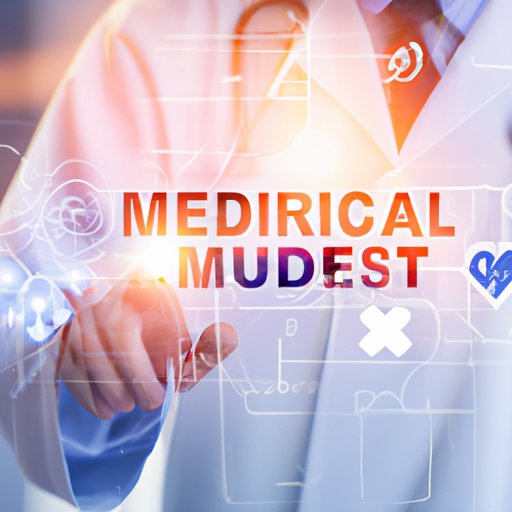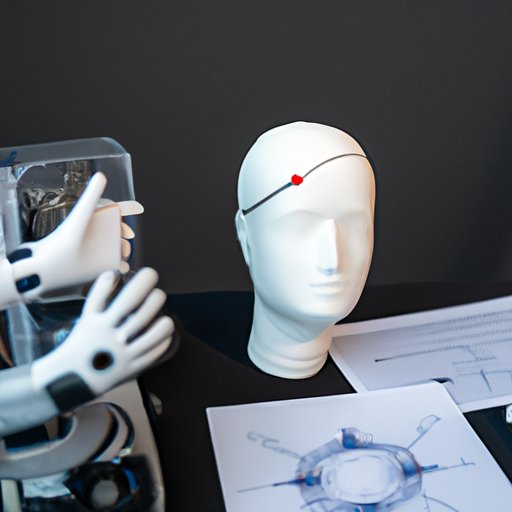Introduction
Medical technology is defined as any type of technology used in the medical field to diagnose, treat, or prevent diseases and other medical conditions. As medical technology continues to evolve, it has become an increasingly important tool for healthcare providers in providing quality care to their patients. This article will explore the various types of medical technology available and how they are revolutionizing healthcare.
Exploring the Latest Medical Technologies: A Guide to What’s Available
There are many different types of medical technology available, ranging from diagnostic tools such as x-rays and CT scans to therapeutic devices such as pacemakers and prosthetics. In addition, there are a variety of software programs and applications designed specifically for the medical field. Here is a look at some of the most common medical technologies.
Types of Medical Technology
Diagnostic technologies include imaging tests such as x-rays, ultrasounds, MRIs, and CT scans, which allow physicians to view the inside of the body without invasive surgery. Diagnostic analysis tools such as blood tests, urine tests, and genetic testing can also be used to detect medical conditions. Therapeutic technologies, on the other hand, include medical devices such as pacemakers, artificial joints, hearing aids, and prosthetics, which help to improve the quality of life for those with chronic medical conditions. Software applications are also becoming increasingly popular, allowing healthcare providers to access patient records, track vital signs, and manage medications.
The Most Common Medical Technologies
X-rays are one of the oldest and most commonly used diagnostic technologies. They use radiation to create images of the bones and organs, which can then be used to diagnose medical conditions. Ultrasound is another type of imaging technology that uses sound waves to create pictures of the body’s internal organs and tissues. MRI (magnetic resonance imaging) and CT (computed tomography) scans use magnetic fields and X-rays to create detailed 3D images of the body’s internal structures. Blood tests and genetic testing are also commonly used to diagnose medical conditions.
Pacemakers, artificial joints, hearing aids, and prosthetics are all examples of therapeutic technologies. Pacemakers are small devices that are surgically implanted into the chest to help regulate the heart’s rhythm. Artificial joints are used to replace missing or damaged joints, while hearing aids and prosthetics help to improve the quality of life for those with disabilities. There are also a variety of software applications available to assist healthcare providers in managing patient records, tracking vital signs, and managing medications.
Resources for Researching Medical Technologies
If you are interested in researching medical technologies, there are a variety of resources available online. The National Institutes of Health (NIH) provides a wealth of information on the latest medical technologies, including a list of clinical trials and research studies. The Food and Drug Administration (FDA) also provides information on approved medical devices and drugs, as well as safety alerts and recalls. Additionally, there are a number of websites dedicated to providing up-to-date information on medical technologies.

The Future of Medicine: How Medical Technology is Transforming Healthcare
Recent advances in medical technology have enabled healthcare providers to diagnose and treat medical conditions with greater accuracy and efficiency than ever before. From robotic surgery to AI diagnostics, medical technology is rapidly transforming the way healthcare is delivered. Here is a look at some of the most innovative medical technologies and their potential applications in healthcare.
Recent Advances in Medical Technology
Robotic surgery is one of the most advanced medical technologies currently being used in healthcare. Robotic surgical systems allow surgeons to perform complex procedures with greater precision and control than traditional techniques. AI (artificial intelligence) diagnostics are also becoming increasingly popular, allowing healthcare providers to quickly and accurately diagnose medical conditions. Other advances in medical technology include wearable medical devices, telemedicine, and 3D printing.
Wearable medical devices are designed to monitor a patient’s vital signs and provide real-time data to healthcare providers. Telemedicine allows healthcare providers to provide remote consultations and treatments via video conferencing. Finally, 3D printing is being used to create custom implants and prosthetics that are tailored to the individual patient.
Potential Future Applications of Medical Technology
As medical technology continues to evolve, its potential applications in healthcare are virtually limitless. In the future, medical technology could be used to create personalized treatments based on a patient’s genetic profile. It could also be used to develop new drugs and therapies that are more effective than existing treatments. Additionally, medical technology could be used to create artificial organs and tissues that could be used to replace damaged or diseased organs.
Benefits of Medical Technology
The use of medical technology has numerous potential benefits. For example, it can improve accuracy in diagnosis and treatment, increase access to care, and reduce costs. Additionally, medical technology can provide healthcare providers with valuable insights into a patient’s condition and enable them to make better informed decisions about treatment. Finally, medical technology can help to improve the overall quality of life for those suffering from chronic medical conditions.
From Robotic Surgery to AI Diagnostics: A Look at the Most Innovative Medical Technologies
Here is a closer look at five of the most innovative medical technologies and how they are revolutionizing healthcare.
Robotic Surgery
Robotic surgery is one of the most advanced medical technologies currently being used in healthcare. Robotic surgical systems allow surgeons to perform complex procedures with greater precision and control than traditional techniques. These systems can also reduce the risk of infection, minimize scarring, and shorten recovery times. While robotic surgery is still relatively new, it is expected to become increasingly common in the years ahead.
AI Diagnostics
AI diagnostics are becoming increasingly popular, allowing healthcare providers to quickly and accurately diagnose medical conditions. AI algorithms are used to analyze large amounts of data, identify patterns, and make predictions about a patient’s condition. AI diagnostics are expected to revolutionize the way healthcare is delivered, enabling healthcare providers to make more informed decisions about diagnosis and treatment.
Wearable Medical Devices
Wearable medical devices are designed to monitor a patient’s vital signs and provide real-time data to healthcare providers. These devices are typically worn on the wrist or around the neck and can track everything from heart rate and blood pressure to activity levels and sleep quality. Wearable medical devices can be used to monitor a patient’s health over time, helping to identify potential problems before they become serious.
Telemedicine
Telemedicine is a form of healthcare delivery that uses technology to provide remote consultations and treatments. Telemedicine allows healthcare providers to communicate with patients via video conferencing, allowing them to provide care without having to be physically present. This can be especially beneficial for patients who live in rural areas or who have difficulty accessing healthcare services.
3D Printing
3D printing is being used to create custom implants and prosthetics that are tailored to the individual patient. 3D printing technology can also be used to create models of organs and tissues, which can be used to study anatomy and practice surgical techniques. Additionally, 3D printing can be used to create lower-cost medical devices, such as hearing aids and prosthetics, which can be more affordable for patients.
What Are the Benefits of Using Medical Technology? Examining the Pros & Cons
The use of medical technology has numerous potential benefits. Improved accuracy in diagnosis and treatment can lead to better outcomes for patients. Additionally, improved access to care can lead to better health outcomes for those living in rural areas or who otherwise have difficulty accessing healthcare services. Finally, medical technology can reduce costs by streamlining processes and eliminating the need for unnecessary tests and treatments.
However, there are also potential risks associated with medical technology. For example, there is always the possibility of human error when using medical technology. Additionally, there is the potential for privacy breaches if personal health data is not properly secured. Finally, there is the potential for misuse of medical technology, such as when it is used to provide care that is not in the best interest of the patient.
Conclusion
Medical technology is revolutionizing the way healthcare is delivered. From robotic surgery to AI diagnostics, medical technology is enabling healthcare providers to diagnose and treat medical conditions with greater accuracy and efficiency than ever before. Additionally, medical technology can improve accuracy in diagnosis and treatment, increase access to care, and reduce costs. However, there are also potential risks associated with the use of medical technology, including the possibility of human error, privacy breaches, and misuse.
Overall, medical technology is an invaluable tool for healthcare providers in providing quality care to their patients. As medical technology continues to evolve, its potential applications in healthcare are virtually limitless. It is clear that medical technology will continue to play an important role in transforming healthcare for years to come.
(Note: Is this article not meeting your expectations? Do you have knowledge or insights to share? Unlock new opportunities and expand your reach by joining our authors team. Click Registration to join us and share your expertise with our readers.)
